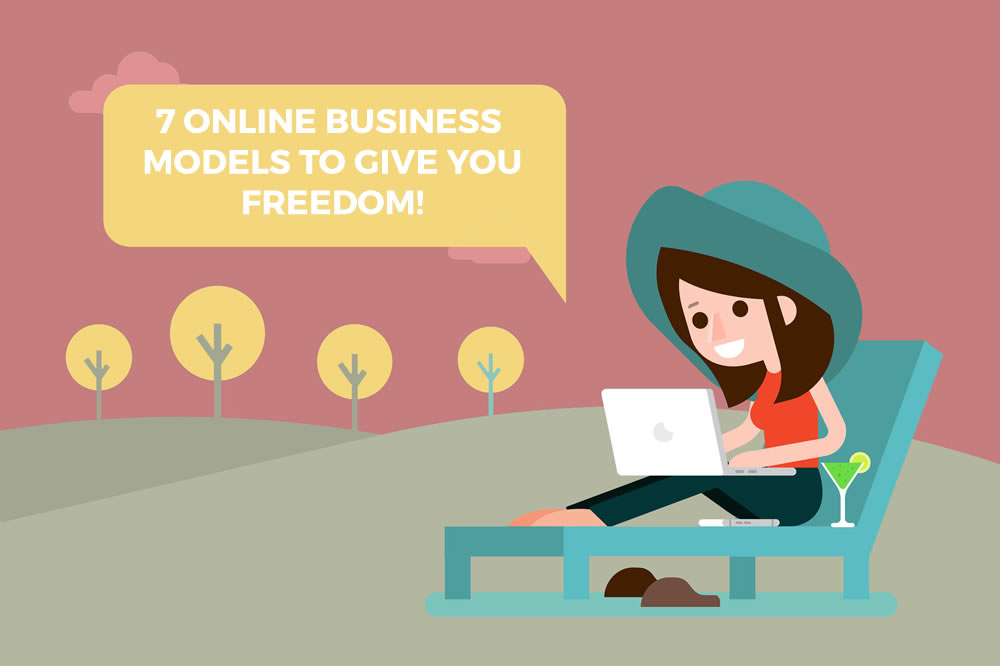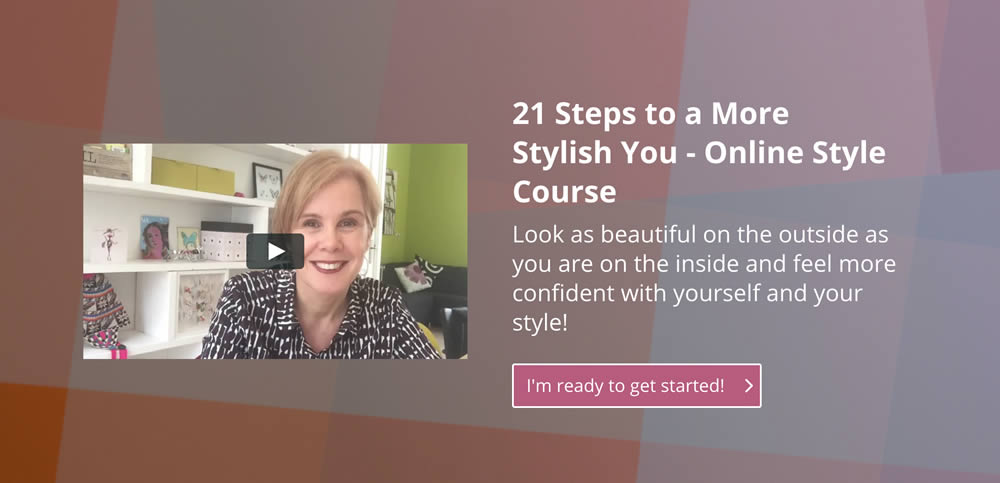
So you've decided that you want to create an online business. Congratulations!
It may just be one of the best business decisions you will ever make.
There are lots of ways to start an online business and it's important that you select an online business model that will work for you. In this article we will highlight 7 online business models to choose from.
If you're interested in passive income streams read this article first.
What kind of life do you want to create for yourself?
To decide what kind of business model you want to have, it's important to know what kind of life you want to lead.
Imagine if I met you at the airport 5 years from now, what would you tell me you are doing? How has your life changed from today and what kind of freedom do you have as a result of your online business?
To decide what is right for you could ask yourself some of these questions.
- What will I spend my days doing?
- How much traveling will I do?
- What kind of business will I have?
- How much customer contact will there be?
- How many hours do I want to work?
While reading through the models below, consider the above questions and how the answers fit into your view of your future.
7 online business models to consider
Online business model #1 Provide a service
For this model you exchange hours of your time for a service that you provide.
This is usually a one on one service which is charged hourly or you set a fixed fee for the project. It is an easy and relatively quick way to get started, but you can only serve one person at a time so it can restrict the opportunity for you to scale.
In terms of freedom, you choose the hours you work and how you serve your clients, but you don't earn money when you are not providing the service.
Marketing and audience requirements:
This business can be started easily and quickly. You can get customers through networking and social media marketing.
Examples:
- Image consultancy business
- Web design business
- Life or business coach
Online business model #2 Provide a service to a group of people
Building on #1, you can offer that service to multiple people at the same time.
It will give you more opportunity to scale and can offer more freedom. With this business model you are serving more people in fewer hours. There is more planning and technology involved to offer this service and you also need a different approach to sales for a group than for individuals.
It is an expansion of the one-on-one coaching model but with the potential of higher revenue.
Examples:
- Life coach offering a group program
- Image consultant organizing a live course
Online business model #3 Create an online course

In this online business model you create an online course for your customer. Although the initial effort of creating the course can be time consuming, you are creating an asset that you can sell for many years to come.
Additionally you need to plan to market and sell the course. You may start initially, as I did, with another product that becomes a course. My course started as a challenge. That morphed into a book that ultimately became an online course through a series of natural progressions. My course 21 steps to a more stylish you is an example of a self study course.
After the live launch, it will go in evergreen mode and can be sold on a continuous basis through a special marketing strategy. Through the use of online technology, people are able to enroll, pay and participate in the course automatically.
The level of interaction you set up will determine how involved you are in the course and what it offers. This could include a private Facebook group, a discussion forum, or one on one sessions with you.
Often the level of personal interaction will also dictate how much you can charge for the course. The more interaction, the more you can charge. Creating an online course can provide a lot of freedom for you once the course is launched and is sold on auto pilot which can result in a passive income stream.
Marketing and audience requirements:
Selling a course successfully requires a bigger audience and more internet marketing skills. You may also need to hire some additional help to create marketing materials and do ad management.
Examples:
- An image consultant creating a style course, eg. 21 Steps to a More Stylish You
- Web design business creating a do-it-yourself course for customers who have a smaller budget
- Life or business coach offering a premium course
Online business model #4 Blogging

This is a great way to build a community around your writing. It's an area I have a lot of expertise in, as it's how I launched my 40+Style business. My blog generates up to 500,000 visitors per month.
Once you build the traffic to your blog you will be able to monetize with brand endorsements, advertorials, product sales, affiliate links advertising and courses. It can take some time to set up, write your articles and build traffic and you must be very consistent or you won't see results. It's a great way to add passive income streams to your business.
When I first started blogging I was writing 5 articles per week. I wrote every day and created images and interacted with others in the online community. If you love this model it's crucial that you find something that you are passionate about, as blogging can be a lot of work.
However, if you love writing about the topic, it can be a lot of fun too. A great blog can also help you benefit from work done years ago. Articles I have written years ago still generate continuous revenue.
Additionally you can use the traffic to your site to generate new subscribers. These new leads are essential for product sales, generating revenue from affiliate links and courses.
Marketing and audience requirements:
This business model requires consistency. You don't have to create something every day but weekly or biweekly is key. You'll have to be patient as you start to build momentum for your blog but if you're working on this consistently in the right, you'll enjoy magnificent long-term results.
Examples:
Online business model #5 Social Media Influencer

Being a social media influencer is a more recent option for an online business model.
You start by developing a large personal online following. From this you may be able to become a brand ambassador and offer brand endorsements on your social media channels.
You are also able to generate affiliate commissions from the images you feature and can be hired as a model for brands.
Becoming successful as a social media influencer can be very time consuming though. To maintain visibility you must be very active on the relevant social media platforms. For authenticity of your account you also need to be personally involved. It is difficult to outsource a lot of your content because of this. Also, people that become successful with this, usually have that little something extra that makes them stand out.
This business model is best suited for an extrovert personality as it usually involves sharing a lot of yourself. Introverts can find this difficult to maintain.
Most influencers are also dependent on brands for their revenue. If a brand decides to change its focus and you are no longer in demand you may lose an important revenue stream. Another disadvantage or having social media platforms as your main source of income is that it can be potentially risky. If a social media platform changes their algorithms or shuts down, then you will lose the related revenue streams.
Marketing and audience requirements:
To be successful as an influencer you need to get good at getting genuine followers and engagement. This means that you need to post engaging content on a regular basis.
Examples:
- Judith Boyd, the Style Crone
- Lyn Slater, the Accidental Icon.
Online business model #6 Online Shop

To create an online shop, find a product or product range and sell it online. While setting up a shop online is relatively easy with services like Etsy or Shopify, it may involve high up-front costs to purchase your product.
It may also be quite competitive in that space and managing an online shop can be labor intensive and involve a lot of paperwork and involvement with delivery services, post offices etc.
You may choose to do those things yourself or perhaps outsource them. There are options to get around inventory costs, such as using a drop shipping model, but this will involve lower margins and increased risks as compared to a traditional online shop.
Another option is to join Amazon's FBA program, which allows you to sell your products on Amazon. Amazon will handle all the shipping and handling and you get to tap into their massive audience.
The physical products online business model is a great opportunity to sell a product or product line you love with no need for a physical location. If you get momentum with your online shop, it can become a great online asset. You may like to read Suzanne’s story of how she created her online vintage store.
Marketing and audience requirements:
The creation of your product is usually very labor intensive. In addition, you will need good online marketing skills to make your product known amongst potential customers. An easy way to bypass a lot of the marketing hassles and to tap into a massive audience is to use the Amazon FBA program.
Examples:
Online business model #7 Create a membership site or club
Creating a membership site or club is growing in popularity because of the benefits of having a subscription model with recurring revenue.
A membership club gives you reliable monthly revenue without the need for continuous large product launches. The model also is relatively automated, once access for joining, renewal, cancellation and other processes and emails are in place, it is easy to manage.
As long as you are able to provide consistent high quality content this model can work very well.
Marketing and audience requirements:
Monthly membership fees are usually lower than course fees, which means that you mean more members to make it profitable. Although it may seem that the product is easier to market with the lower price point, it still requires a lot of promotion. That's why this business model is mostly suitable to those who have already built a substantial audience and are experienced in online marketing.
Examples:
- Netflix
- Blue Apron
- Life Coach School's Self Coaching Scholars
Which business model will you choose?
Hopefully this breakdown of 7 online business models will help you in your decision making process in starting the right business.
If you have any further questions, let me know!